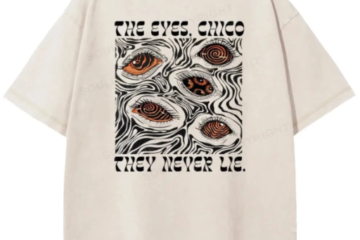When it comes to dressing for special occasions, men often face a challenge in understanding the different formal attire codes. Whether it’s a wedding, gala, or corporate event, the right outfit can make a big impression. This guide is here to help you navigate the world of formal attire for men, from tuxedos to black ties and everything in between.
We’ll break down each dress code, explain what to wear, and give you tips on how to look your best. By the end, you’ll be ready to take on any formal event with confidence and style.
Black Tie: The Classic Formal Look
The “Black Tie” dress code is one of the most formal attire guidelines for men. It’s typically worn at events like galas, weddings, and formal dinners. For a classic black tie look, a well-fitted black tuxedo is a must. The tuxedo should be paired with a crisp white dress shirt and a black silk bow tie.
A black tuxedo also requires shiny black dress shoes, often patent leather. Accessories like cufflinks and a pocket square can add an extra touch of elegance.
If you’re attending a wedding as a groomsman, be sure to coordinate with the groom on details like groomsmen ties, which should match the overall theme or colors. With the right pieces, a black tie outfit is timeless and always appropriate for formal occasions.
White Tie: The Most Elegant Option
White tie is the most formal and elegant men’s dress code. It’s typically reserved for high-class events like royal balls, state dinners, or formal galas. A white tie outfit includes a black tailcoat, a white dress shirt with a stiff collar, and a white bow tie.
The trousers should be black with a satin stripe on the side, and they must be worn with formal black dress shoes, usually patent leather. Accessories like white gloves, a white pocket square, and a formal dress waistcoat complete the look.
This style is rare but signifies the highest level of formality and refinement in men’s dress codes. If you’re ever invited to a white-tie event, remember to keep everything neat, polished, and perfectly coordinated.
Black Tie Optional: Finding the Right Balance
Black tie optional is a dress code that gives you more flexibility while still leaning towards formal wear. It means you can either wear a black tie outfit, like a tuxedo or choose a dark suit and tie for a slightly less formal look.
For a tuxedo, you’ll need a black bow tie, a formal shirt, and black patent leather shoes. However, if you choose a dark suit, it should still be a well-tailored option in navy, charcoal, or black. You can add a tie that complements your suit, but it doesn’t need to be a bow tie.
This dress code is often found at weddings, charity events, or upscale dinners, offering a balance between more relaxed and highly formal wear styles. Whatever you choose, aim to look polished and refined for the occasion.
Business Formal: Dressing for Professional Success
Business formal attire is all about looking polished and professional in the workplace. For men, this typically means a well-tailored suit, a dress shirt, a conservative tie, and dress shoes. A dark-colored suit, like navy or charcoal, is often preferred for business formal settings.
The shirt should be crisp and neat, usually in white or light blue, while the tie should be subtle and complement the suit. Shoes should be leather, black or brown, and always polished. This dress code shows that you are serious about your career and helps you make a strong impression.
Following a men’s fashion guide can help you understand the details, like choosing the right accessories and ensuring the fit is perfect, to give you a confident, professional look.
Cocktail Attire: Semi-Formal with a Touch of Style
Cocktail attire is a semi-formal dress code that allows you to look stylish while keeping things classy. For men, this usually means a well-fitted suit, but you can opt for something less formal than a full business suit. A dark blazer paired with dress trousers or chinos is a great choice.
You can also wear a button-down shirt with a tie, but the tie isn’t always necessary for this look. Shoes should be leather or suede, and don’t forget to add a stylish watch or cufflinks for a little extra flair.
Cocktail parties are a chance to show off your personal style, so feel free to experiment with colors and textures while keeping the look sophisticated. Elegant outfit ideas for cocktail attire should balance comfort with style, ensuring you look sharp and feel confident throughout the event.
Dressing for Weddings: What to Wear to Different Types of Weddings
Weddings are special occasions, and knowing what to wear depends on the type of wedding you’re attending. For a formal or black-tie wedding, a tuxedo or a dark suit is a must. Pair it with a white dress shirt, a black bow tie, and polished dress shoes.
For a semi-formal wedding, you can wear a well-tailored suit in a lighter color like navy or grey. You can also wear a tie or skip it if the vibe is more relaxed. For casual or beach weddings, a dress shirt and chinos or linen trousers are appropriate.
You can even skip the jacket if the event is more laid-back, but make sure your shoes are still dressy enough. For destination weddings, light fabrics and relaxed styles work best, especially if it’s a warm-weather location. Always check the wedding invite for the dress code, as this will help you decide the best outfit for the occasion.
Shoes, Accessories, and Grooming: Perfecting the Details
The right shoes and accessories can complete any outfit, adding a touch of style and personality. For formal events, polished leather shoes, like Oxfords or brogues, are a must. They should always match your belt for a cohesive look. Adding accessories like a watch, cufflinks, or a pocket square can elevate your appearance, but don’t overdo it.
Keep it simple and elegant for the best effect. Grooming is just as important as your outfit. A well-groomed appearance shows attention to detail and makes you look more polished. Make sure your hair is neat, your nails are clean, and your facial hair is trimmed.
When you pay attention to these small details, you’ll look sharp and confident, no matter the occasion. Perfecting the details with the right shoes, accessories, and grooming ensures you’re dressed to impress.
How to Choose the Right Suit for Your Body Type
Choosing the right suit starts with understanding your body type. If you have a slim build, look for suits that add some structure, like a slightly padded shoulder. A single-breasted suit with a narrow lapel can help create a more balanced look.
For those with a broader frame, a suit with a wider lapel and double-breasted style can complement your body shape. If you’re taller, try a suit with a longer jacket to avoid looking too stretched. Shorter individuals should go for a suit with a shorter jacket length to avoid being overwhelmed by fabric.
Pay attention to the fit around your waist; a well-tailored suit that tapers in at the waist can create a more flattering silhouette. The trousers should fit comfortably around the hips without being too tight or loose.
Finally, always remember to get your suit tailored for a perfect fit, as small adjustments can make a big difference in how you look and feel.
The Importance of Fit: Why Tailoring Matters
The fit of your clothes is crucial to how you look and feel. A suit that fits well makes you appear more confident and put together. Off-the-rack suits often need small adjustments to fit your body perfectly. Tailoring ensures that the jacket sits comfortably on your shoulders and that the sleeves and pants are the right length.
A well-fitted suit can highlight your best features, like your waist or shoulders. Even simple changes, like taking in the sides or shortening the sleeves, can make a huge difference. Clothes that fit properly also feel more comfortable, so you’re not constantly adjusting or tugging at your clothes.
Without a proper fit, even the most expensive suit can look sloppy. In the end, tailoring makes sure that your clothes flatter your body and enhance your overall appearance.
Choosing the Right Fabric: How to Match Materials With the Occasion
Choosing the right fabric is important for looking good and feeling comfortable at any event. For formal occasions like weddings or galas, opt for luxurious materials like wool, silk, or velvet, as they add sophistication. Lighter fabrics, such as linen or cotton, are great for warmer weather or casual events.
For business settings, a well-tailored wool suit is a safe and professional choice. Always consider the fabric’s weight and texture to match the season and the formality of the occasion.
Learn all about formal attire for men
In conclusion, understanding formal attire for men codes is essential for dressing appropriately for any occasion. Whether it’s black tie, white tie, or business formal, the right outfit can leave a lasting impression.
Pay attention to fit, details like accessories, and grooming to ensure you look your best. With the right knowledge, you’ll confidently navigate any formal event. Remember, when in doubt, always opt for a polished and well-fitted look.
Did you find this article helpful? Check out the rest of our blog.



